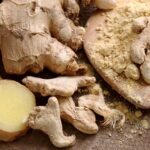Livestock sector and Livestock markets in the world are changing dramatically. Demand for livestock products is predicted to increase by 5% or more per annum. It can be met from different sources, explains TP Sethumadhavan
India currently has approximately 194.5 million cattle, accounting for about 15% of the world’s cattle population. Of these, around 51.36 million (about 26.4%) are crossbred or exotic cattle, according to the latest estimates. The states with the highest numbers of crossbred or exotic cattle are Tamil Nadu, Uttar Pradesh, and Maharashtra, which have seen significant growth due to focused breeding programs, but other contributing states include Kerala, Karnataka, and Punjab.
More than 75 percent of the rural households in India depend on the livestock sector for supplementary income. This sector contributes 30 percent of the total income from agriculture in the country. In southern states it is more than 40 percent. The annual growth rate in the livestock sector is more than four times that of agriculture. The commodity share is 3.53 as against 3.5 in agriculture.
Analysis of the trends over the last two decades indicates that the growth in poultry and dairy sectors has exceeded the growth in cereal production. There are certain indications, which suggest that the demand led livestock growth is expected to continue and by 2025 more than 60 percent of meat and 50 percent of milk will be produced in the developing countries. China and India are likely to emerge as the primary producers of meat and milk respectively.
Even though India is the largest milk-producing country yet productivity per animal is only less than 50% of the world average. This is mainly due to a poor levels of nutrition and low genetic potential for milk production and health care. The gap between demand and supply of green and dry fodder presents a challenge for fodder production in the coming years. Studies done by NDDB revealed that 45% of the milk is consumed as liquid milk, 28% as Ghee, 6% as Butter, Khoa and 7 5% as Dahi and 2.6% as milk powder.
In general consumption expenditure on milk and milk products is next to cereals and is rising steadily over the years. Demand elasticity estimates of the Indian dairy industry for milk and milk products combined are 1.65 in rural and 1.15 in urban India. (Dutta and Ganguly 2000). Moreover, the expenditure elasticity of demand for milk and milk products for the lower-income class is considerably greater.
Livestock markets in the world are changing dramatically. There are increasing concerns over the systems of livestock production and the safety of livestock products. The picture in the developing country appears markedly different. Demand for livestock products is predicted to increase by 5% or more per annum. It can be met from different sources, largely domestic but also international sources.
It is expected that most of the projected increase in livestock demand will be met from within the developing world. It will, however, require enormous increases in the supply of feeds and other inputs, scaling up of livestock production, processing, distribution, and marketing, and much improved systems for assuring the quality and safety of livestock products for the consumers.
How the poor will benefit from the increasing consumption of livestock products will depend on a number of policy, technology and research choices. There is evidence from several countries that even smallholders are very competitive under the right circumstances (Delgado et al 2001).
Market opportunities for the poor can be greatly improved by paying specific attention to social equity and environmental issues. Selective investments in infrastructure, co-operatives, contract farming arrangements and other pro-poor market mechanisms should be done. Public support is required for appropriate health and food safety systems that could benefit the poor. These changes will require new ways of doing business and strategic research that targets the priority concerns of the poor. There is great potential for increasing the assets, incomes and food safety of the poor from livestock production, marketing and consumption.
While emphasising production, the marketing of the livestock products is not given due attention. Scientific breeding, feeding, management and disease control have been given due importance but when the issue of sustainability arises marketing comes into the picture. Livestock products except for around 15% of the milk produced are mainly traded through unorganized sector. In order to explore the rural market for livestock products, our production strategy needs to be market-oriented. It should be in tune with the local, domestic and international markets. Production and branding of traditional livestock products, which fetches good prices, should be promoted.
There are certain prerequisites for popularizing a market-oriented production strategy for livestock products. The cost of production must be reduced considerably without compromising product quality to make it economically viable. Changes in the extension approach, market forecasting system, value addition, awareness on diseases affecting the trade of livestock products, consumer behavior, production of livestock products based on the demographic characteristics of the population, good manufacturing and retail practices, best production practices and implementation of food safety norms, etc need more emphasis.
The extension approach should be need-based and participatory in nature. It should be an integrated systems approach with a problem-solving dimension. This approach should include all efforts to improve production while giving due attention to marketing. Farmers need to be given more awareness on value addition, food safety norms, branding, and problems, and prospects of marketing, including the four cardinal elements of marketing like the product, price, promotion, and place.
As told by the world marketing Guru Philip Kotler in today’s world of IT explosion branding is becoming more important than before. One needs to redefine the role of marketing as creating, communicating and delivering value to the consumer. The value addition of livestock products should be based on consumer needs and taste, like fat-free milk for cardiac patients, chocolates for children, quality cheese for the international market, etc.
Measures to make livestock products internationally viable and competitive
If the farmer has to sustain and if his products have to find a good market the cost of production has to come down and the quality of the products has to be improved. For that, a cost-effective farming system has to be adopted, and the efficiency of production has to go up. Veterinarians have a significant role to play. The innovations in technology and marketing should be brought to the farmer’s doorsteps. Techniques that will reduce the cost of production and enhance production per animal should be developed and should be viable and sustainable.
Genetic improvement must be achieved at the same time maintaining the genetic diversity. Selection of breeds adaptable to the existing agro-climatic conditions that can thrive on unconventional feeds and fodder should be given priority. Biotechnology tools should be effectively utilized to harvest maximum output with less extensive inputs. Conservation of locally available germplasm that has a lot of good traits should be attempted.
The production system that would optimise farmers’ return through the judicious use of farm wastes should be developed. Integrated farming with pig, duck, and fish is very rewarding. The enhancement of production should be centered on small farmers. Reducing the calving interval and a targeted minimum calving interval should ensure maximum return to the farmer.
Effective utilization of feed and crop residue and other agricultural products should be given paramount importance. Improving the availability of nutrients in feed for the animal using enzymes, growth promoters, use of chelated minerals etc. should be thought of. The feed is an important constraint for livestock production in India and Green fodder and paddy straw are scarce commodities. Effective planning should be made for the collection, processing, storage, and distribution of paddy straw, while enriching its quality.
Seasonal surpluses should be exploited and effort should be made for uniform availability throughout the country. A concerted effort should be made to utilize the available land for fodder production. Effective utilization of available crop residues, industrial wastes and unconventional fodder should be made. There is a good scope to develop the meat industry and its export potential is very good. Livestock for meat should be identified, male animals should be specially reared for meat purposes, and veal production should be augmented.
Utmost care should be taken to ensure the quality of the products. We cannot think of export of the dairy or meat products without assuring quality. Strict hygienic measures at the site of production, during transport and storage, should be maintained. Quality assurance laboratories should be established for meat, milk, feed and other products. We should have real surpluses of livestock products. Value-added products should be developed to capture the market.
Have a news or topic to share with industry? Write to us editorial@pfionline.com

















